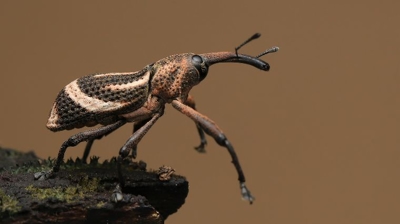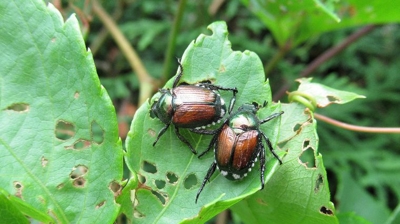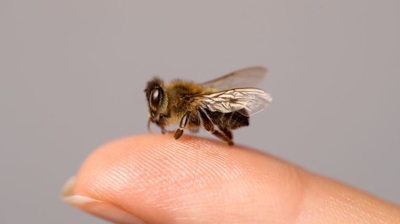
Chipmunks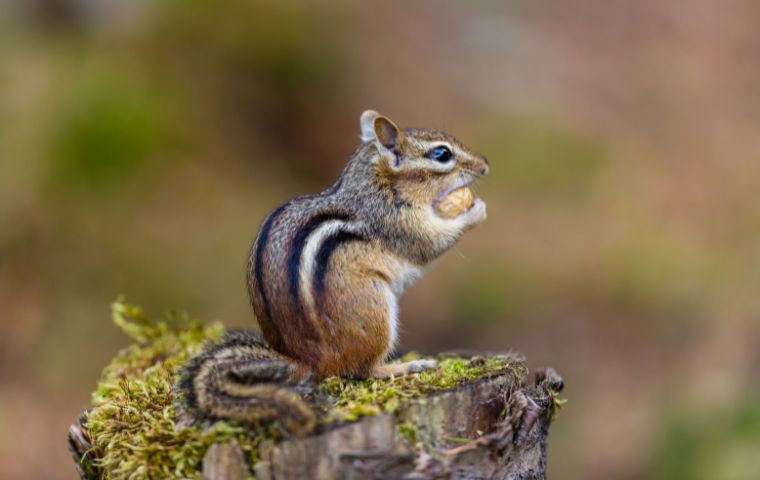
What Are Chipmunks?
Chipmunks are small, striped rodents belonging to the family Sciuridae, which also includes squirrels and marmots. These charming creatures are native to North America, although some species can be found in Asia. Chipmunks are known for their distinctive appearance, with prominent stripes running down their backs, and their endearing behavior, which includes cheek pouches for storing food and a high-pitched, chirping vocalization.
Chipmunks are typically quite small, ranging from 7 to 10 inches in length, including their tails, which are about 3 to 5 inches long. They have a reddish-brown to grayish-brown fur color, with five dark stripes that run along their backs, alternating with lighter stripes. Their tails are bushy and often have a white tip. These stripes help camouflage them in their natural woodland habitats.
One of the most notable features of chipmunks is their cheek pouches. These pouches are used to store food, such as nuts, seeds, and berries, which they collect during the warmer months. Chipmunks are omnivorous, so they also consume insects, bird eggs, and even fungi. Their keen sense of smell and sharp claws make them skilled foragers.
Chipmunks are primarily diurnal, meaning they are active during the day. They live in burrows or dens, which they dig with their sharp claws. These burrows can extend several feet underground and contain multiple chambers for sleeping, storing food, and raising their young. Chipmunks are solitary animals for most of the year, coming together only for mating.
Breeding typically occurs in the spring and early summer. Female chipmunks give birth to a litter of two to eight pups after a gestation period of about 31 days. The young are weaned at around 42 days and become independent shortly after. Chipmunks have a relatively short lifespan, typically living for 2 to 3 years in the wild.
In terms of behavior, chipmunks are known for their cautious and skittish nature. They are constantly on the lookout for predators, such as hawks, foxes, and snakes, and will emit high-pitched alarm calls when they sense danger. Despite their small size, chipmunks play a crucial role in forest ecosystems by aiding in seed dispersal and providing a food source for various predators.
Chipmunks are small, striped rodents native to North America and Asia. They are known for their distinctive appearance, cheek pouches for storing food, and diurnal behavior. Chipmunks are important members of forest ecosystems, contributing to seed dispersal and serving as prey for many predators. Their charming and iconic presence makes them a beloved part of the natural world.
What Do Chipmunks Look Like?
Chipmunks are small, rodent-like mammals known for their distinct and charming appearance. They belong to the squirrel family, Sciuridae, and are primarily found in North America. Here is what chipmunks look like:
- Size and Shape: Chipmunks are relatively small creatures, with an average length of 5 to 6 inches (12.7 to 15.2 cm) and a weight ranging from 1 to 5 ounces (28 to 142 grams). They have a slender, cylindrical body and short, sturdy legs.
- Fur and Coloration: Their fur is soft and dense, typically consisting of three longitudinal stripes running along their back. The central stripe is dark, often black, flanked by two light stripes, usually white or light gray. These stripes extend from the head down to the tail. In addition, chipmunks have alternating light and dark stripes on their face, which can resemble a mask.
- Head and Facial Features: Chipmunks have a small, rounded head with bright, round eyes, which can range in color from dark brown to amber. Their cheeks have pouches that can be used to carry food, which is a distinctive feature that sets them apart from similar rodents. They also possess short, rounded ears.
- Tail: Their tail is relatively short, measuring about 3 to 4 inches (7.6 to 10.2 cm) in length and is often bushy and similar in color to their body.
- Limbs: Chipmunks have sharp, curved claws on their feet, which are adapted for digging and climbing. Their front paws are especially dexterous, making them excellent at handling and manipulating objects.
- Distinguishing Features: One key characteristic that distinguishes chipmunks from other ground squirrels is their size and the presence of stripes on their body. These stripes, along with their facial markings and cheek pouches, are distinctive features of chipmunks.
Chipmunks are small, striped rodents with a unique and captivating appearance. Their distinct markings, cheek pouches, and bushy tails make them easily recognizable and endearing to many people.
Where Are Chipmunks Found?
Chipmunks are native to North America and can be found in various habitats across the continent. To provide a comprehensive overview of where you might find chipmunks, here are some key locations and types of environments where they are commonly encountered:
- Woodlands: Chipmunks are often found in deciduous and mixed woodlands. They prefer areas with plenty of trees and underbrush, where they can find both cover and a variety of nuts, seeds, and insects for food.
- Forests: Many species of chipmunks inhabit forests, including coniferous forests. They are known to thrive in areas with abundant vegetation and leaf litter.
- Parks and Gardens: Chipmunks are quite adaptable and can be found in urban and suburban areas, including parks and gardens. These environments often provide a mix of vegetation and food sources.
- Fields and Meadows: In more rural areas, chipmunks may be found in fields, meadows, and grassy clearings. They seek out these areas for foraging and burrow in the surrounding soil.
- Rocky Areas: Some chipmunk species, like the Eastern chipmunk, are known to inhabit rocky outcrops and hilly terrain, where they create burrows and forage among the rocks.
- Canyons and Cliffs: In certain regions, chipmunks are adapted to living in canyons and cliffs, making use of crevices and natural shelters for their nests.
- Residential Areas: Chipmunks may venture into suburban and rural residential areas, particularly if there are gardens, bird feeders, or other food sources available.
- Camping Sites and Recreation Areas: Chipmunks are often seen in campgrounds, picnic areas, and other outdoor recreation spots, where they are attracted to the presence of food scraps and crumbs.
- High Elevations: In mountainous regions, chipmunks can be found at higher elevations, including alpine and subalpine zones, where they adapt to the colder climate.
- Wetlands: Some chipmunk species, such as the Siskiyou chipmunk, are associated with wetland habitats, such as marshes and riverbanks.
The specific type of chipmunk and the availability of suitable habitat can vary by region. Chipmunks are known for their adaptability, and they can thrive in a range of environments, from dense forests to open fields. However, they are most commonly associated with wooded areas where they can easily find food and shelter.
What Is The Life Cycle Of Chipmunks?
The life cycle of chipmunks, like many small mammals, involves distinct stages of development and reproduction. Here is an overview of the life cycle of chipmunks:
Birth and Infancy:
- Chipmunks typically have one or two breeding seasons per year, with a peak in the spring and another in the early summer.
- The female chipmunk, known as a doe, gives birth to a litter of usually 3 to 5 blind, hairless pups, though litter size can vary.
- Newborn chipmunks are entirely dependent on their mother for nourishment and care. They are born in an underground burrow.
- The mother provides milk and keeps them warm, and the pups start to grow fur and open their eyes after about three weeks.
Juvenile Stage:
- After about 5 to 6 weeks, the young chipmunks begin to venture outside the burrow and explore their surroundings under the watchful eye of their mother.
- They learn essential skills such as foraging, burrow building, and social behavior.
- The mother continues to feed and protect her offspring during this stage.
Independence:
- Around 8 to 10 weeks of age, the young chipmunks become more independent and are weaned off their mother's milk.
- They start to forage on their own and develop their skills in finding and storing food for the winter.
Maturity:
- Chipmunks typically reach sexual maturity at around 10 to 12 weeks of age, although this can vary among species.
- At this point, they are ready to establish their own territories and begin the breeding process themselves.
- Breeding and Reproduction:
- Adult chipmunks engage in courtship rituals, which may involve vocalizations and displays.
- Once a mating pair is established, the female undergoes a gestation period of about 30 days.
- She then gives birth to a new litter of pups, continuing the cycle.
Overwintering:
- Chipmunks are known for their habit of hoarding food for the winter. During the fall, they collect seeds, nuts, and other items to store in their burrows.
- When winter arrives, chipmunks retreat to their underground burrows, which can be quite extensive. They enter a state of torpor, which is a deep sleep that helps conserve energy.
- Chipmunks rely on their stored food to survive the winter and emerge in the spring when food becomes more abundant.
Longevity:
- The typical lifespan of a chipmunk in the wild is about 2 to 3 years, although they may live longer in captivity.
The life cycle of chipmunks is characterized by a series of seasonal activities, including breeding, birthing, and preparing for winter. Chipmunks are well adapted to this cycle and their environment, allowing them to thrive in a wide range of habitats across North America.
What Do Chipmunks Eat?
Chipmunks are omnivorous rodents that have a diverse diet. Their diet typically consists of a variety of foods, including:
- Seeds and Nuts: Chipmunks are known for their love of seeds and nuts. They will often gather and store these items in their cheek pouches to consume later. Common choices include acorns, sunflower seeds, and various tree seeds.
- Fruits: Chipmunks enjoy fruits such as berries, apples, cherries, and grapes. They are particularly active in foraging for fruit during the summer and fall when these items are abundant.
- Vegetables: Chipmunks occasionally eat vegetables, including garden crops like corn and peas. They may also nibble on garden plants such as lettuce, carrots, and tomatoes.
- Insects and Small Invertebrates: Chipmunks are opportunistic and may include insects and small invertebrates in their diet. This can provide them with protein. They may hunt for insects like caterpillars, ants, and beetles.
- Fungi: Some chipmunks consume mushrooms and fungi. While they are not strictly mycophagous, they may consume certain fungi when available.
- Grains and Grassy Plants: Chipmunks may feed on grains and grassy plants. This is more common when other food sources are scarce.
- Bird Eggs and Nestlings: In some cases, chipmunks have been observed raiding bird nests to consume eggs or nestlings, especially when other food sources are limited.
- Invertebrates: Chipmunks may also consume small invertebrates like snails, earthworms, and arthropods.
- Fungi: Some chipmunk species, like the Eastern chipmunk, have been observed consuming fungi, especially truffles.
- Bark and Roots: Chipmunks occasionally chew on the bark and roots of plants and trees, which may be an additional source of nutrients.
The specific dietary preferences of chipmunks can vary based on their geographic location and seasonal availability of food. Chipmunks are opportunistic feeders and will adapt their diet based on what is readily accessible. Their habits often include storing food in burrows for winter months when food can be scarce.
Learn more: What Do Chipmunks Eat?
Frequently Asked Questions About Chipmunks
What does chipmunk poop look like?
Chipmunk droppings are small, cylindrical, and brown in color, typically measuring about 1/4 to 3/8 inch in length.
Learn more: What Do Chipmunk Droppings Look Like?
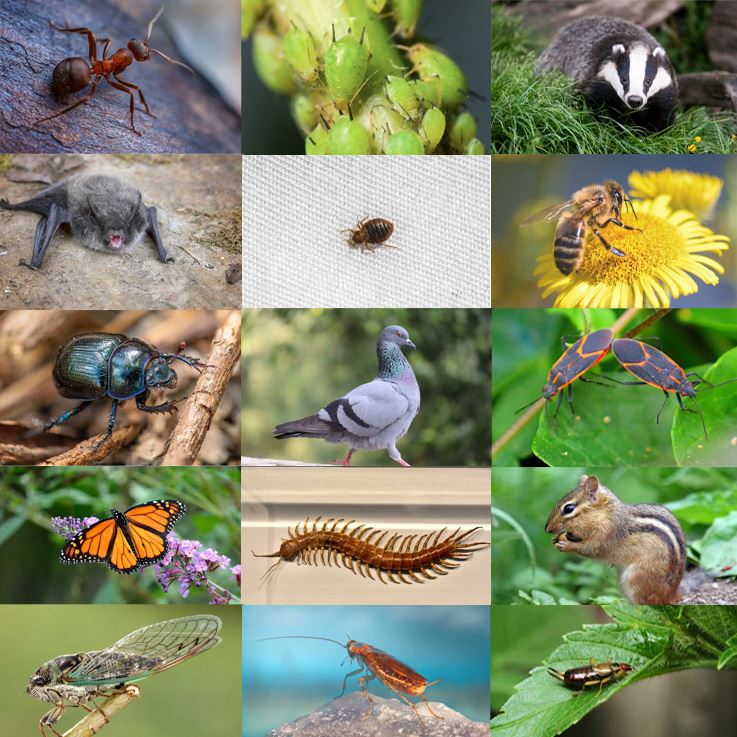

Hear From Our Happy Customers
-
"Wonderful Service"
Wonderful service. Jarvis is great. Took care of everything I needed. Thank you!
- Henry P. -
"Professional & Considerate"
I’m pleased with Miche services. Jarvis came today. Professional and considerate. Thank you!
- Judy B. -
"Fantastic & Patient"
Jarvis was fantastic and patient. He answered my questions with an in-depth explanation and addressed all of my areas of concern. Would love for him to be my assigned tech going forward. Well done!
- Yonnette M. -
"Great Communication"
Tech was on time, communication was great, and he accommodated my needs.
- Alonzo W. -
"Exceeds Expectations"
I can’t say enough positive things about this company... The tech that came out, Jarvis went above and beyond my expectations. Thank you guys, I will continue using your services.
- Jake M. -
"Very Knowledgeable"
The tech that arrived was courteous, professional, and very knowledgeable. He was Great.
- Uerial I.

